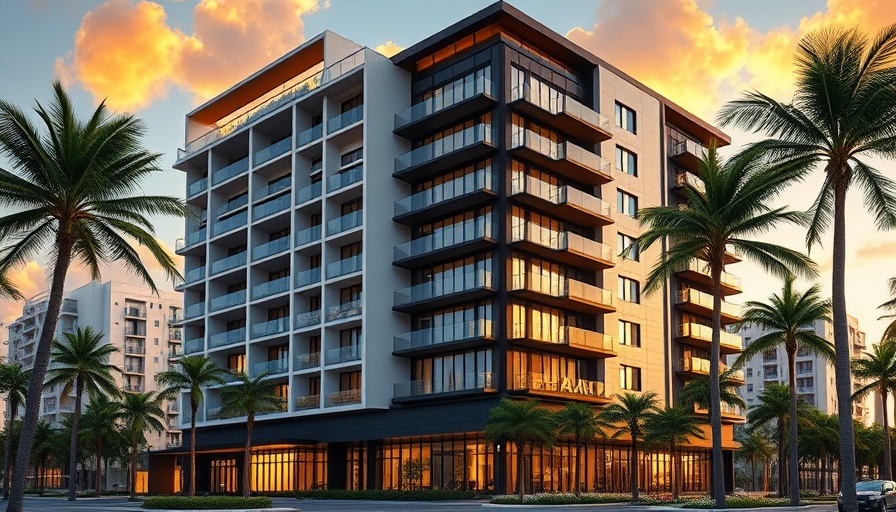
Major Development News: $125M Loan Secures Future of Miami Design District
In a significant move for the Miami Design District, Craig Robins' Dacra has partnered with Hunter Pasteur and The Forbes Company to secure a $125 million construction loan for their latest venture, a residential project aptly named Cassi. This ambitious project will consist of 107 apartments in a 20-story building, providing one- to three-bedroom units averaging around 1,500 square feet. The development promises not just luxury living but also incorporates 23,000 square feet of retail space, marking a transformative addition to this high-profile area.
The Current Landscape of South Florida's Multifamily Housing Market
Despite a recent slowdown in leasing activity and a slight decline in rent prices, the financing for Cassi signals an optimistic outlook for multifamily development in South Florida. This trend has persisted even as economic shifts force many to reconsider their investment strategies. Developers have remained resilient, adapting their projects to meet evolving market demands and tenant needs.
Understanding the Players: Who’s Behind Cassi?
The clout behind the Cassi project is undeniably impressive. Dacra, known for its role in shaping the Miami Design District into a premier destination for retail and dining, teams up with Hunter Pasteur, a luxury residential developer with a rich history in Michigan’s housing market, and The Forbes Company, which brings expertise in managing high-quality retail spaces. This collaboration sets a solid foundation for a successful rollout of the apartment project, catering to both residents and the vibrant community around them.
Future Predictions: What’s Next for the Miami Design District?
The development of Cassi isn’t an isolated incident; it signals a broader resurgence of interest in residential developments within the Design District. Alongside Cassi, other projects, such as the proposed 36-story tower with mixed-use components by JEMB Realty, indicate that this area is quickly evolving from a retail hotspot into a sought-after residential enclave. As Miami's luxury market continues to grow, developers may need to navigate increased competition while also adhering to regulatory adjustments like Florida's Live Local Act.
The Significance of Mixed-Use Developments
One of the key benefits of Cassi and similar projects is their potential to enhance the neighborhood's vibrancy. By combining residential units with retail and communal spaces, these developments create a live-work-play environment that appeals to modern residents who value convenience and lifestyle. This strategic design can lead to a more connected community, where businesses thrive due to the supportive ecosystem fostered by feet on the street.
Economic and Social Impacts of New Developments
While new projects introduce luxury amenities and housing opportunities, they also contribute to the local economy by creating jobs during and after construction. This stimulation can help alleviate some socioeconomic challenges, although it is essential to consider the potential displacement effects on existing communities. Balancing development pressures while ensuring inclusivity and accessibility for all stakeholders remains a pivotal concern.
Equipped for Success: Navigating Challenges Ahead
In a comprehensive real estate landscape, developers face numerous challenges, from rising interest rates to material costs and regulatory changes. The ability of Dacra and its partners to secure funding amidst these issues showcases strategic foresight. Moving forward, continuous adaptation will determine their success in realizing the vision of Cassi and future ventures.
Conclusion: The Forge Ahead for Miami’s Housing
The construction loan secured for Cassi stands as a testament to an unwavering belief in Miami’s growth story. As the Design District reshapes itself, both investors and residents have significant stakes in the outcome of such developments. With ongoing projects in the pipeline, the essence of Miami's multifamily market is becoming more dynamic, posing interesting questions about future integrations of lifestyle, work, and community.
 Add Row
Add Row  Add
Add 



Write A Comment